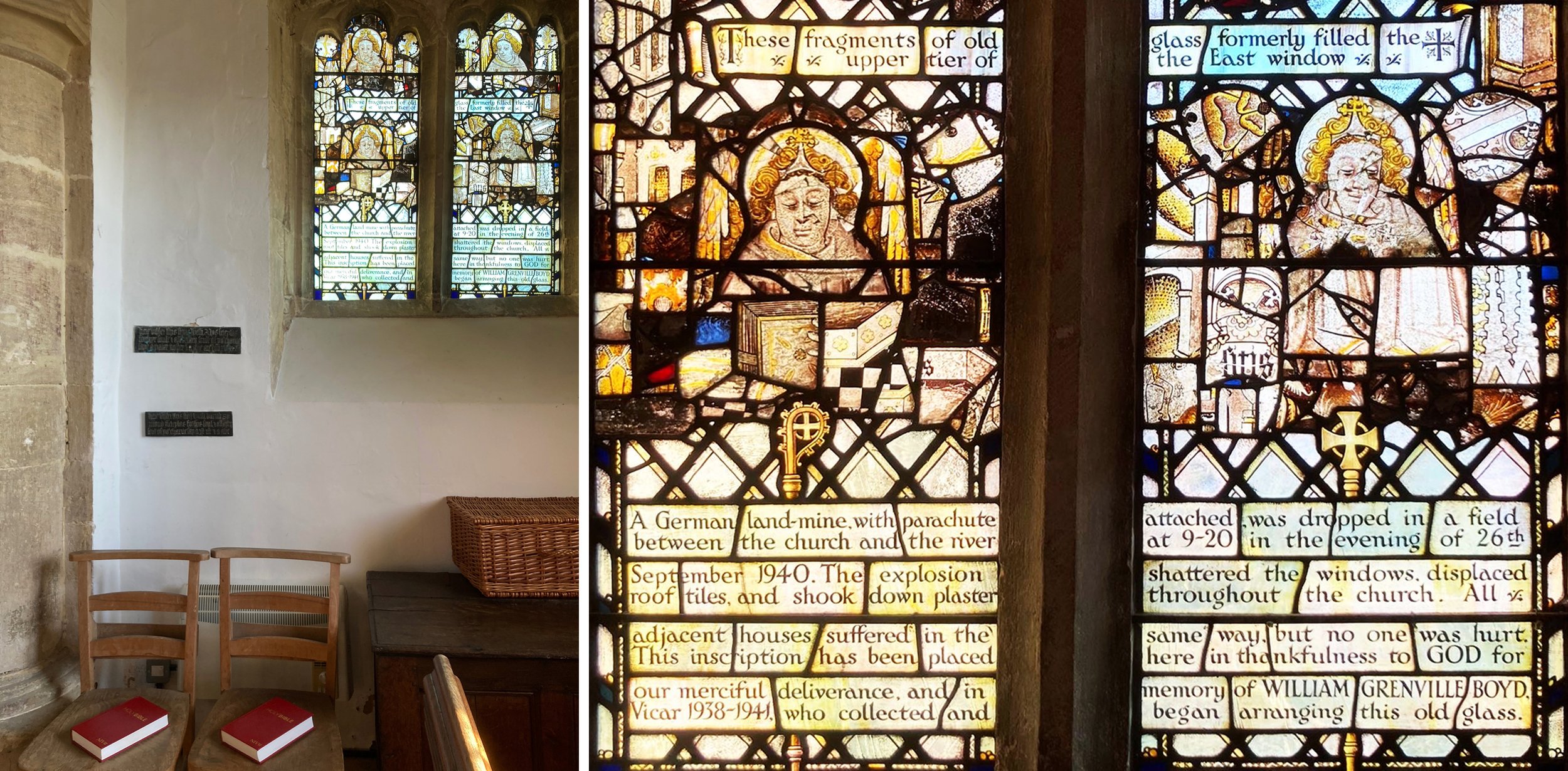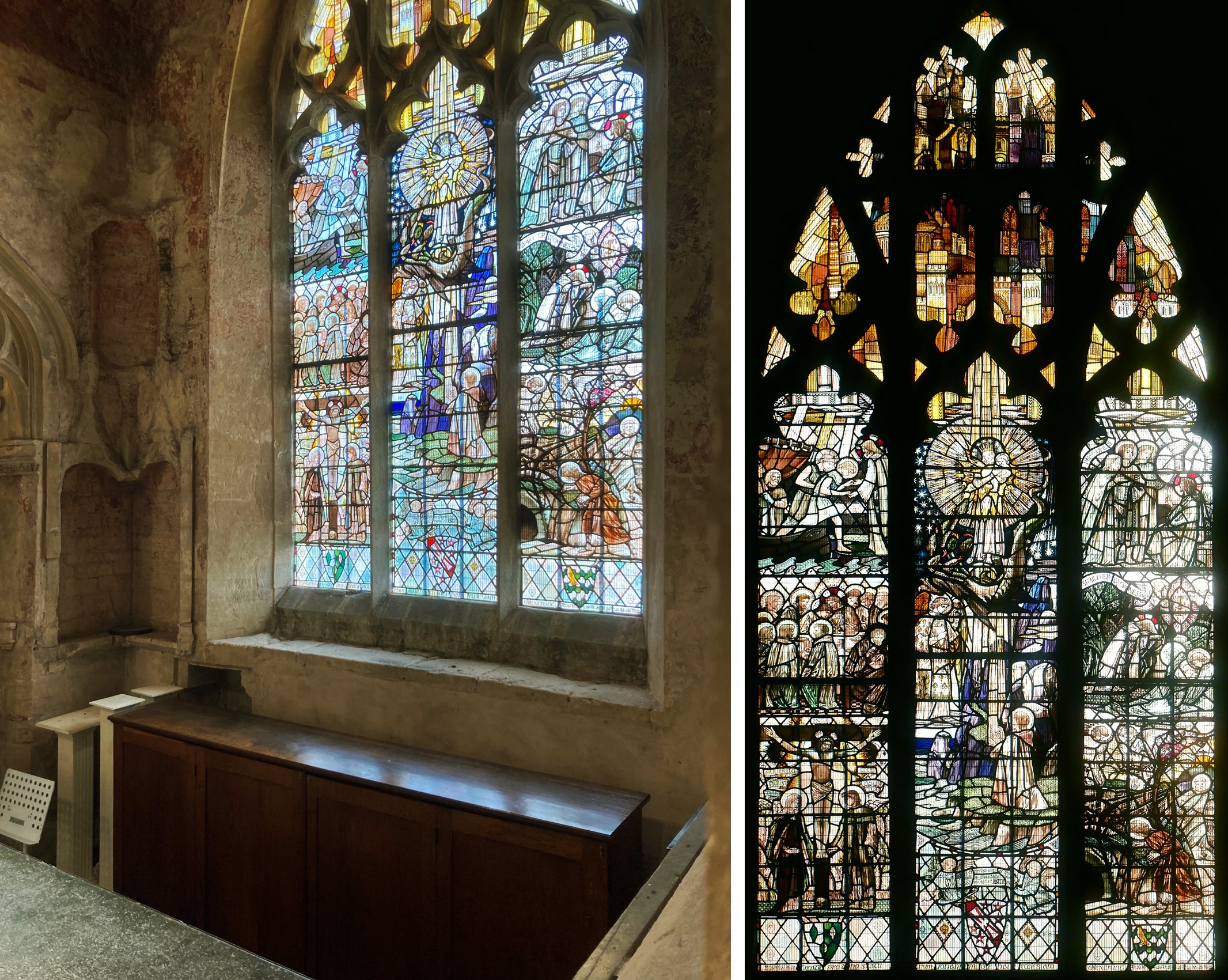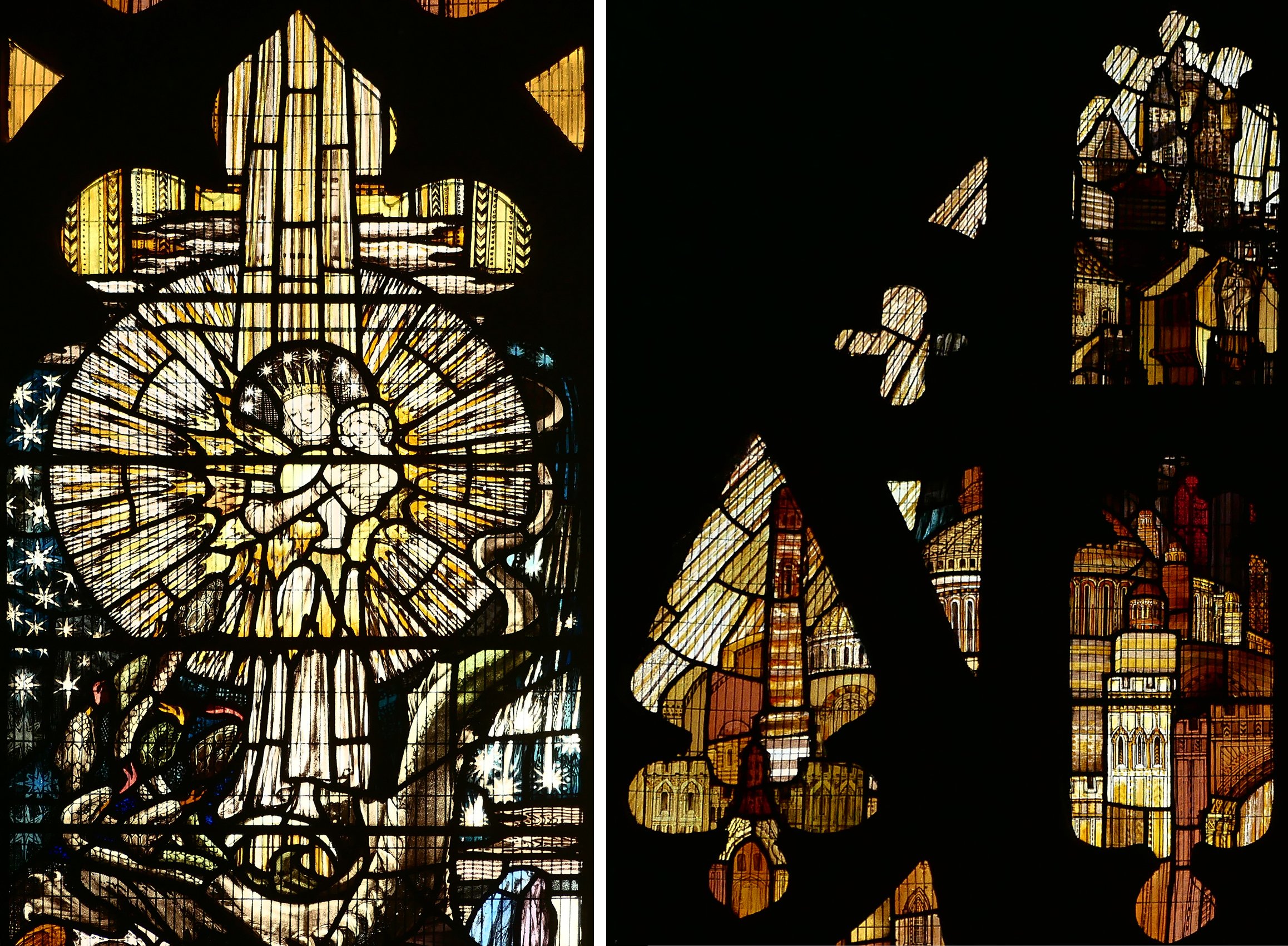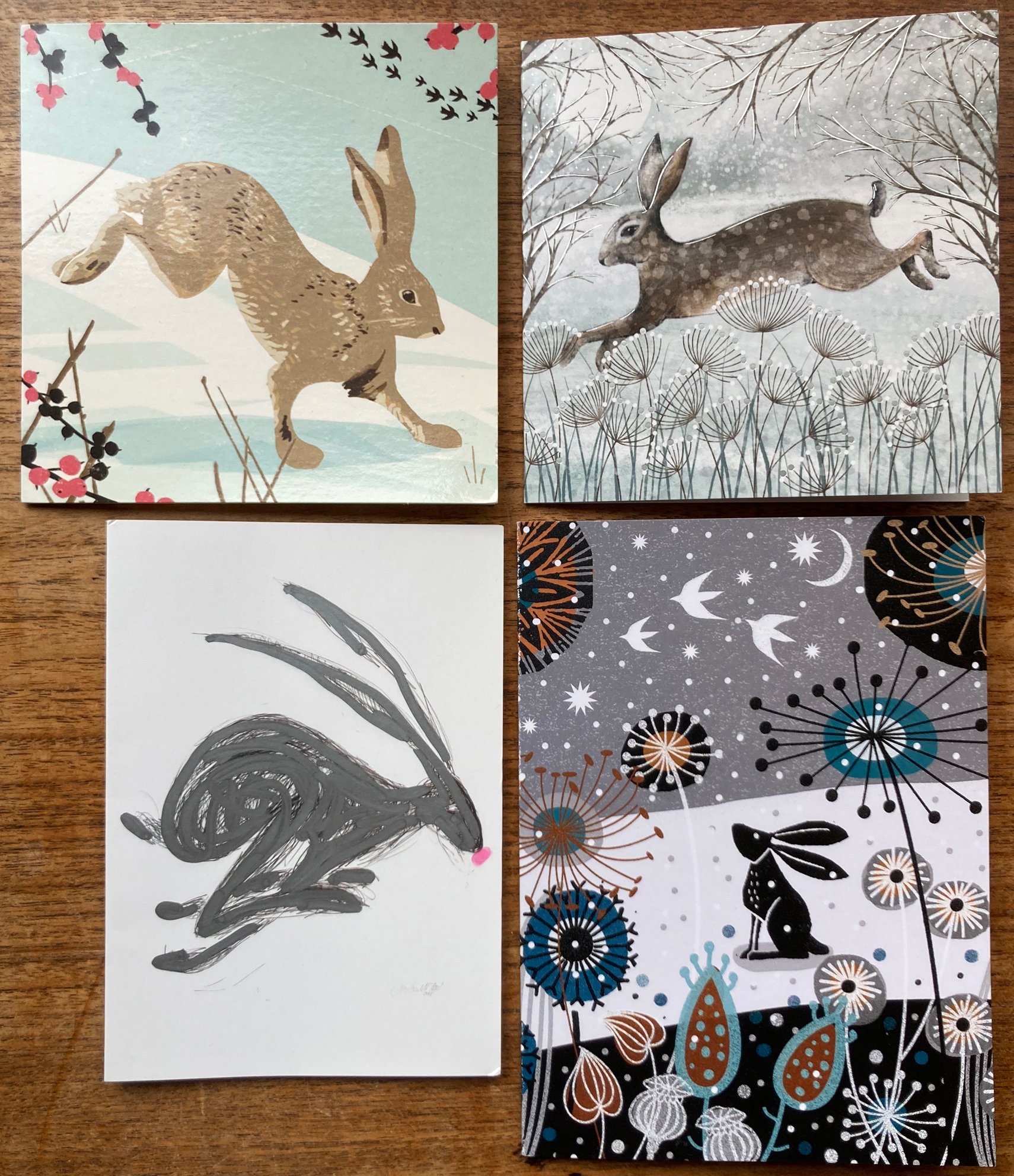Instructions for parking at St John the Baptist Boldre and Beaulieu Abbey Church.
There were odd signs about in New Forest church car parks (above). Beaulieu Abbey church was shut, but St John the Baptist, Boldre was open and in its windows there is a great variety of good twentieth century glass including a beautiful nativity window by Derek Wilson (below). The detail shows the light sketchy paintwork that makes this window appear soft and airy with a 1950s feel.
Boldre, nativity window by Derek Wilson, 1951 and detail.
Boldre, east window by Alan Younger, 1967 and detail.
Interesting as a contrast to Derek Wilson’s window, is the East window by Alan Younger on the theme of Christ in Majesty (above). Here the figure is surrounded by blocks of rich colour and heavy bands of black paint that make the window effective from a distance and also close up. His smaller and later window (below) is similarly angular, with spikes going both ways and some gorgeous coloured organic shapes in the middle. The theme of this window is God The Creator - ‘Overall is a vertical and horizontal structure to suggest order being established and light emerging from darkness ….. at the centre is a rich burst of warm colours suggesting flowering and harvest’ - a quote from the standard, bland blurb on the explanatory plaque that invariably appears near a non figurative window.
Boldre, south west window by Alan Younger, 1980 and detail.
Boldre, Two of three badge windows in North Aisle by Francis Skeat, 1956.
To complement these are a series of nicely balanced badge windows by Francis Skeat (above) with lovely textured clear glass backgrounds and the delicate colours I’ve noticed in his work elsewhere. The most recent window is a classic Millenium one (below) by the glass engraver Tracey Sheppard next to the south porch. Here you have the usual mix of local wildlife and scenery that shows up a lot better against the dark interior from the outside than it does against the pale sky.
Boldre, south aisle window by Tracey Sheppard, 2000 from outside and inside.
All Saints Dibden: east window by Derek Wilson, 1957 from the outside.
We drove off to All Saints, Dibden, excited at the prospect of seeing three more windows by Derek Wilson. The church was locked but even from the outside you could see his fluid painting style in a view of the church tower and in a bold looking east window (above).
I found my third and favourite entry for the ‘churches in churches’ category in the nearby church of St John, Marchwood. The model (below) gives you a good idea of the lofty, austere building that is full of slightly dingy but attractive colours, like the floor detail (below centre) and the spooky stained glass figures in tall gothic windows by Baillie.
St John, Marchwood with stained glass by Baillie, 1863.





























